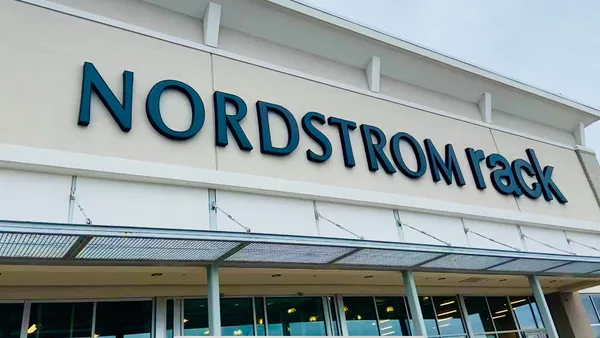Dive Brief:
- The parent company of the new Toys R Us is partnering with Candytopia, maker of candy-based art exhibits, to launch experiential pop-ups in Chicago and Atlanta.
- The locations, dubbed "The Toys'R'Us Adventure," are set to house more than a dozen interactive play rooms and installations. The locations' rooms feature the Toys R Us mascot Geoffrey the Giraffe and popular vendors including Melissa & Doug, the PAW Patrol brand and German toymaker Schleich, according to a press release emailed to Retail Dive.
- The concepts are set to open in October and stay through the holiday season. TRU Kids and Candytopia said Toys R Us Adventures will move to other major U.S. cities in 2020.
Dive Insight:
The revived Toys R Us is still very new and will only have a nominal footprint open for this year's holiday season, but it has already gone a long way to establish an identity distinct from the defunct box retailer whose brand it inherited.
Toys R Us lenders took over the retailer's intellectual property last year, after more than 100 parties were potentially interested in acquiring it. TRU Kids was the vehicle created to house the IP and keep the Toys R Us brand alive and profitable. Running the company as CEO is Richard Barry, former global chief merchandiser for Toys R Us.
Rather than slap the Toys R Us name on some products or new storefronts, as often happens with defunct retailers' brands, TRU Kids teamed up with b8ta to build out a new Toys R Us store chain through a joint venture. TRU Kids and b8ta plan to open two locations this year.
"The store itself is more than just a traditional toy store with boxes on shelves," b8ta CEO Vibhu Norby told Retail Dive this summer. "We've got an event space, we've got a full theater we're building into it for showing movies or premieres, or shows or games." Norby estimates the store space is 70% dedicated to retailing and 30% dedicated to events and activities.
The small stores (roughly 6,500-square-feet each) dedicated to play and events are a sharp turn from the old Toys R Us, with its cavernous spaces piled with merchandise. They also make the new Toys R Us distinct from the mass merchants and other players vying to scoop up the old Toys R Us' market share.
Moreover, the stores represent a break from the traditional retail business model altogether. Rather than buy merchandise from vendors and sell it at markups, the new Toys R Us functions more as a marketing platform. As such, it charges vendors fees for space in the stores, with sales revenue going back to vendors.
The partnership with Candytopia represents another (relatively low stakes) bet on experiential retail. Candytopia's exhibits, with life-size candy sculptures and marshmallow pits, are an ode to social-media friendly, interactive experiences. The Toys R Us pop-ups — house-building sets, disco castles, a Schleich-sponsored safari — are a mash-up of play and brand promotion. That looks to be the new Toys R Us' M.O.











